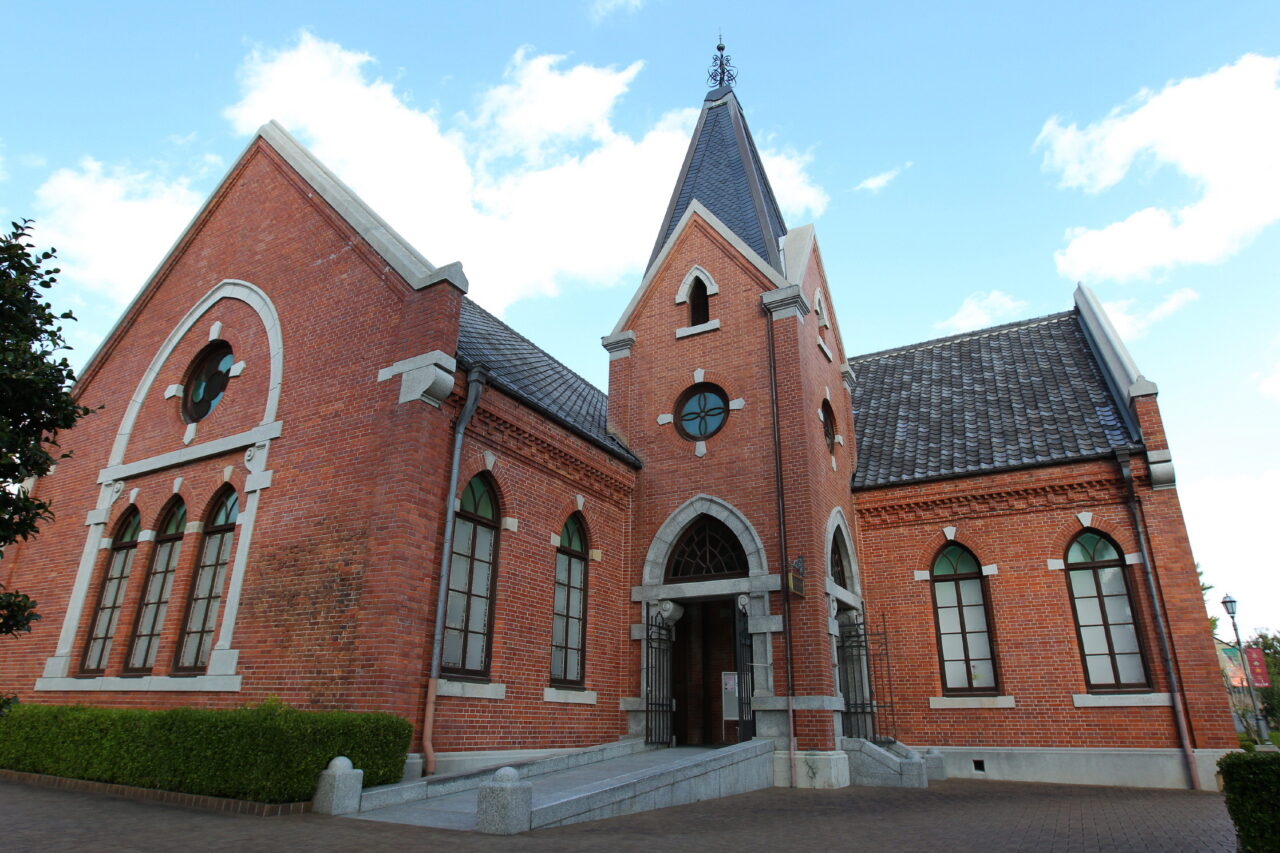
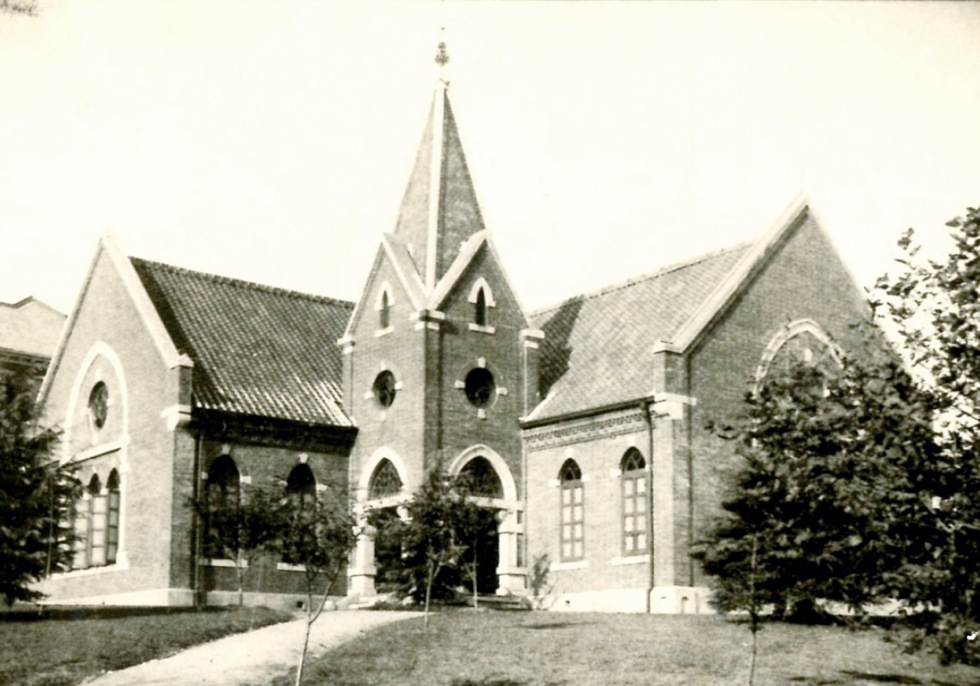
M.M. Wignor with Inosuke Yoshida, builder
1904
Postcards is a new series of articles on ArchitectureRichmond that examines buildings outside of the Richmond area that are of special interest and relevance to our city.
Most Richmonders will be familiar with the Branch House, a stately gothic mansion that was once the largest home on Monument Avenue. It has since been repurposed as the Branch Museum of Architecture and Design. The house was commissioned by John Kerr and Beulah Branch and designed by John Russell Pope, a noted New York-based architect also known for designing the Science Museum of Virginia, and for the Jefferson Memorial and National Gallery of Art in Washington D.C..
Unlike these monuments of our local and national landscape, Richmonders will likely never have heard of the Kobe City Museum of Literature, a modest gothic revival structure built in 1904 in the hills above the Japanese city of Kobe. But this structure is connected to us in an usual way. The building was funded by a donation from John Kerr Branch to Kwansei Gakuin, a non-denominational Christian university founded in Kobe in 1889. The Museum of Literature was originally built as the university chapel, and was known as the Branch Memorial Chapel.
Beginning in the 1860s, after the Meiji Revolution, Kobe became a center of international trade in Japan, a country in which foreign travel was heavily restricted in the preceding 200 years. Merchants from abroad poured in, establishing enduring monuments like the city’s large Chinatown district and the Kobe Mosque, a grand stone edifice with twin minarents completed in 1935. Kitano-cho, an old residential district where many of the city’s Europeans lived, is still home to the Kobe Club, a social organization with members from more than 30 countries. Kwansei Gakuin, including the chapel that Mr. Branch funded, was one of the many institutions founded in the city during this fruitful period of cultural and economic exchange.
The Branch Memorial Chapel was vacated when Kwansei Gakuin University moved to a new campus in 1929. In 1945, near the end of World War II, the building was severely damaged in the American bombing of Kobe, losing its roof and part of its tower. The church was partially restored soon after, though its spire was not rebuilt until 1993. Before the Museum of Literature moved into the structure in 2006, it had a string of occupants including an art gallery, library, school, tourist information center, and an American cultural center.
The brick gothic structure is spare and workmanlike, though pointed arches, granite trim, and a small rose window animate the facade. The design was done primarily by M.M. Wignor, a Briton living in Kobe, in concert with Inosuke Yoshida, a local contractor. In a blended style characteristic of the period, most of the roof is covered in typical Japanese tiles, while the steepest pitches on the tower use a European tile pattern. The roof of the church is supported by hammer beam trusses, arching wooden elements originating in medieval England and associated with the carpenter gothic style in the United States.
Having once been part of an academic campus, the Kobe City Museum of Literature is set far back from the street and up a sweeping granite staircase. Ringed by greenery, this curious remnant of the past is detached from the modern Japanese cityscape which has grown up around it. Looking up at the brick church through the foliage, one might well mistake it for a Richmond scene.
DOK
Image Credits
Image 1: Wikimedia commons, https://ja.wikipedia.org/wiki/神戸文学館, accessed 12/2021.
Image 2: Kansai Bunka [Kansai Culture], https://www.kansaibunka.com/facilities/00000000178, accessed 12/2021.
Image 3: Kobe Museum of Literature Official Website, http://www.kobebungakukan.jp/, accessed 12/2021.

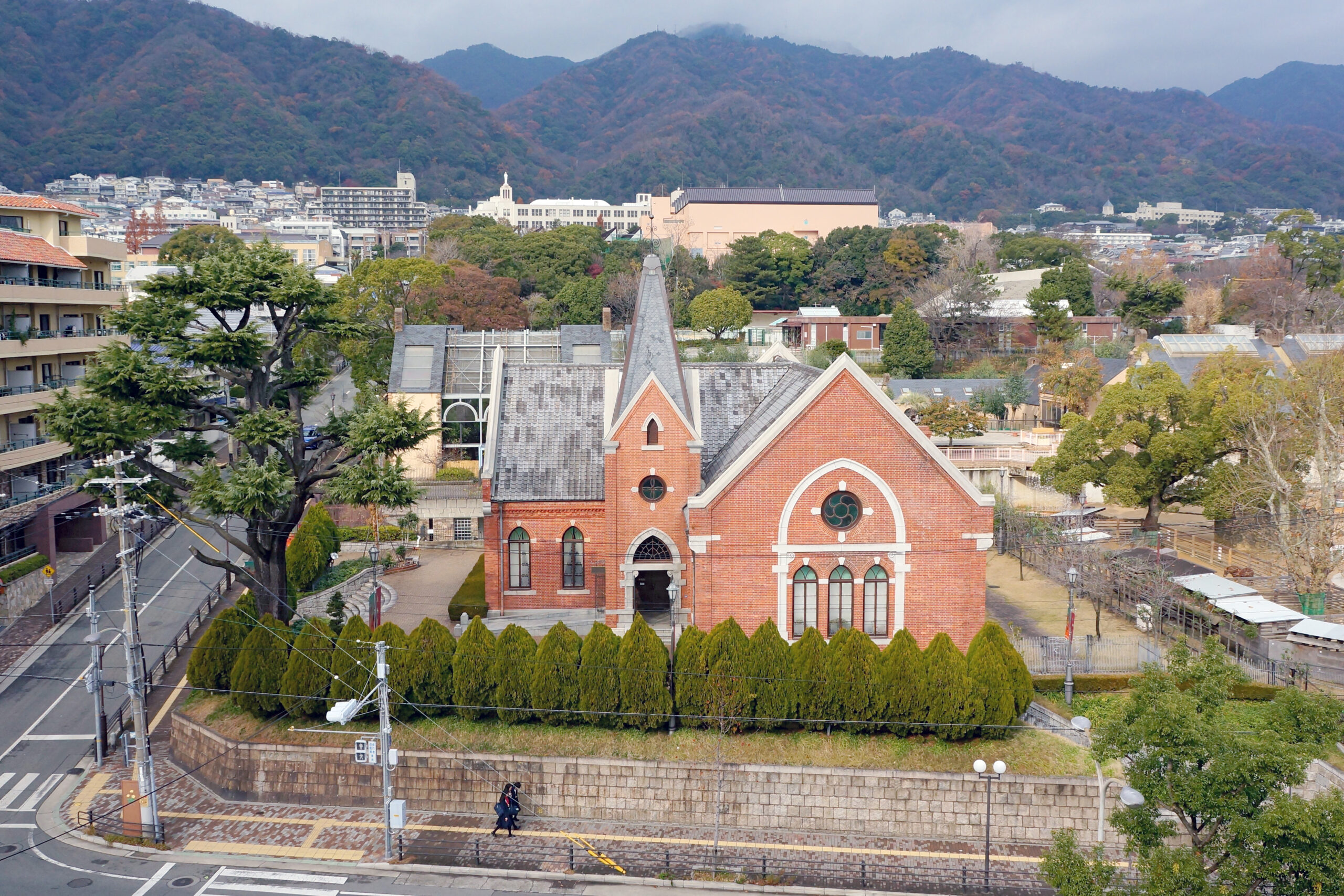

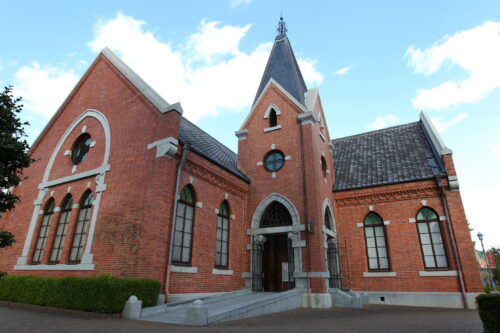
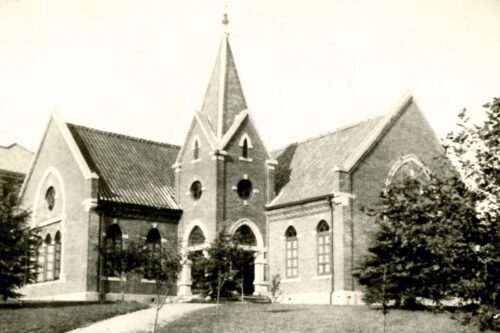
Write a Comment